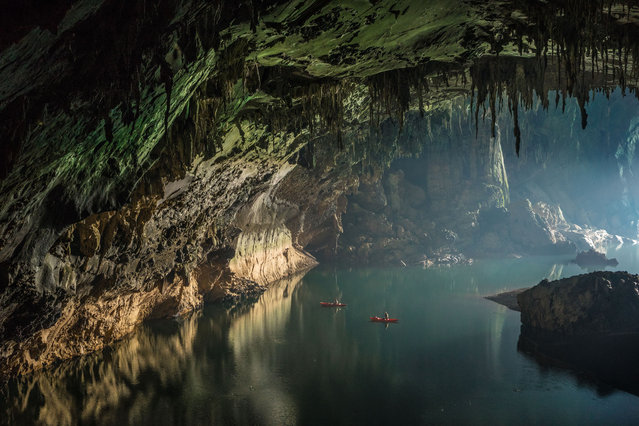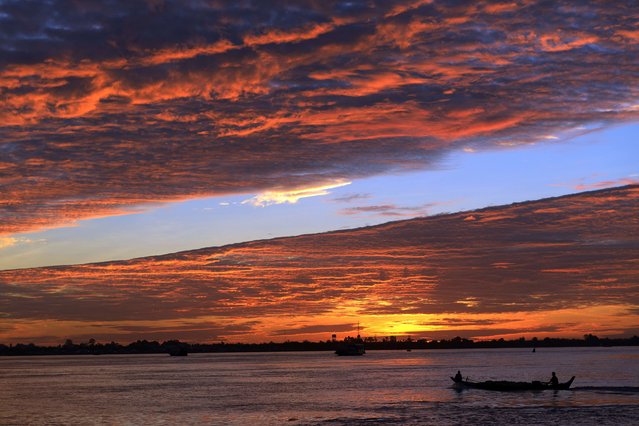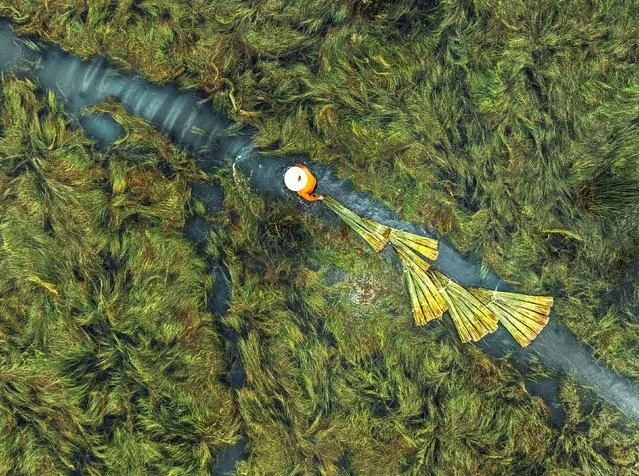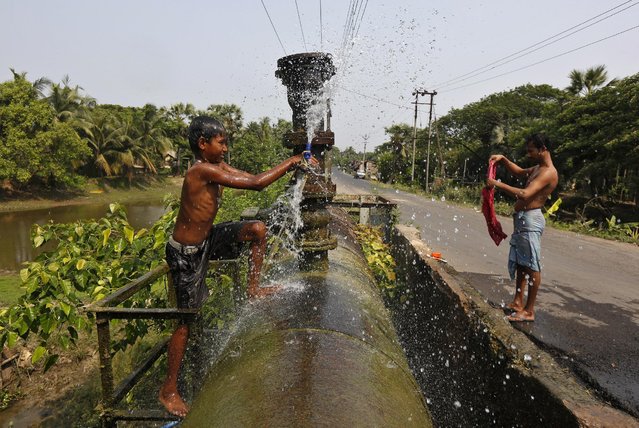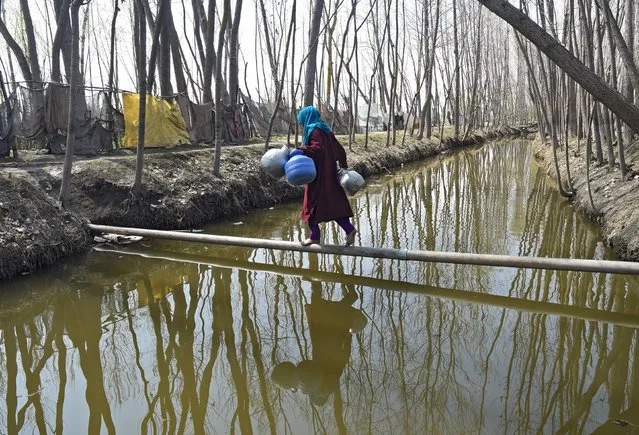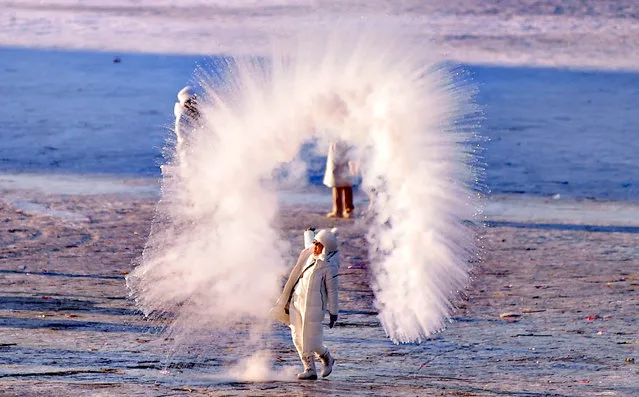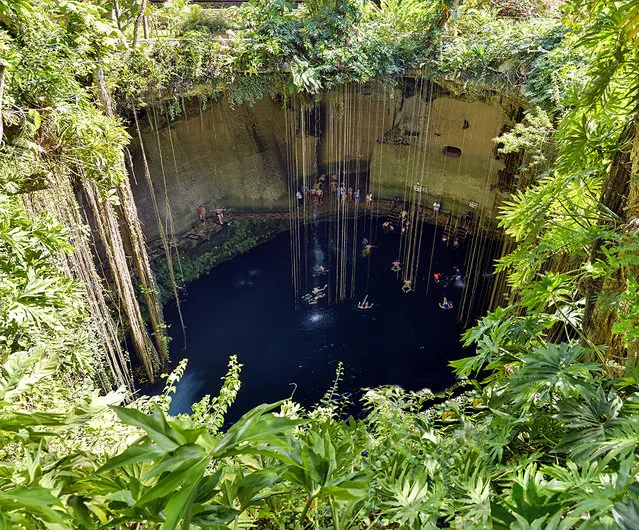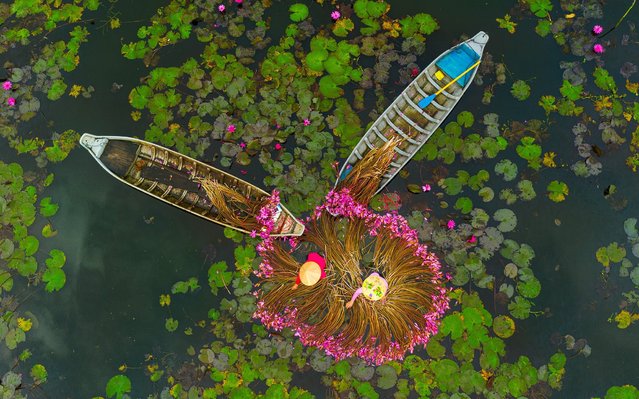
Incredible drone image capture colourful water lilies being harvested in An Giang Province, Vietnam, Southeast Asia on September 2020. Water lilies are an iconic symbol in the Mekong Delta and the flowers are immediately sent to market before landing on meal tables. Their stalks are edible and can be eaten raw with either fermented paste or braised sauce, or dunked into sour soup or hotpot. (Photo by Nguyen Sanh Quoc Huy/Triangle News)
25 Sep 2020 00:05:00,post received
0 comments

